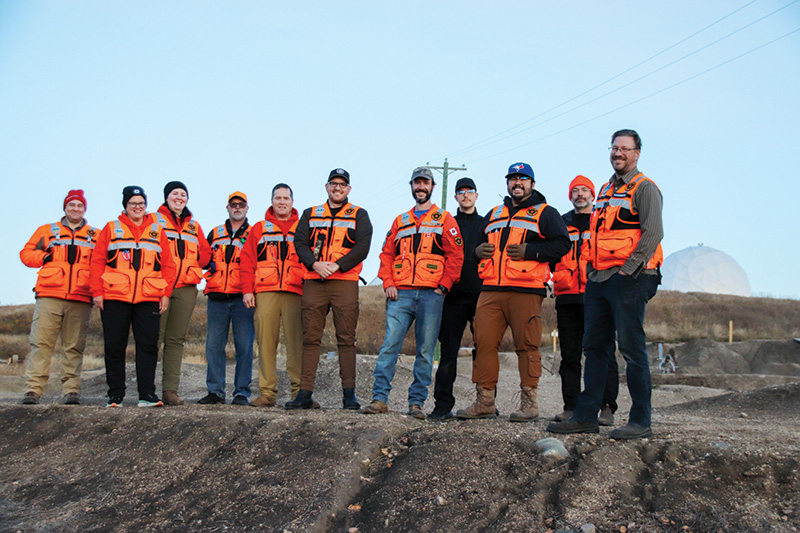The fall hunting season is upon us, and many Lakelanders will be heading out in search of big game. The Cold Lake Search and Rescue Society—part of a provincewide network of volunteers—has some advice on getting in and out of the bush safely.
The first thing, says team member Al Tomalty, is to have a plan and share it. “Make sure somebody knows where you’re going, what you’re doing, and when you’re going to be back,” he said.
It’s critically important. If someone knows when to expect you home, they’ll know if you might be in trouble. If they know where you planned to go, it makes searching easier.
And if your plans change while you’re out, “communicate,” Tomalty says.
That can mean calling home with a satellite phone, leaving a note at your base location, or even marking your trail as you go.
“I’ve seen arrows on the ground made out of twigs. Anything that gives us an idea where you went, especially if it’s not where you were originally planning to go,” Tomalty said. “It’s usually the biggest thing that people fail on and it causes us the most problems.”
Fellow team member Jeremy Thomas said it’s important to be prepared in case things go wrong. He said the very basics are remembered as “the five Cs.”
“A container—something you can carry and boil water in and cook a meal,” Thomas said. “Combustion—preferably more than one way to make a fire, so some matches and a lighter for example.”
He also listed cordage, for hanging a tarp; cover, which is the tarp itself or a tent; and a cutting tool for cutting food or firewood.
“You’d be surprised how many people, when they go out and they get themselves into trouble, it’s like, ‘oh, I had that stuff, but I left it in the vehicle,’” added team member Chris Vandenborn. “It’s worth the weight to carry with you on the off chance that something does happen.”
The team also suggests making a bootprint by stepping on a piece of aluminum foil, and leaving that on the dash of your vehicle.
“Usually the first thing we find is the vehicle,” Vandenborn said, “so automatically we’ll have a shoe print. We can take a picture and send that around the group and then we know exactly what we’re looking for.”
Vandenborn added that appropriate clothing is an important key to comfort and survival. Dressing in layers will allow you to warm up or cool down, and a waterproof outer layer can keep you dry.
He said a person’s behaviour on realizing they are lost can make a big difference to a search effort. Search and Rescue organizations will teach children to “hug a tree,” or stay where they
are so searchers aren’t looking for a moving target.
There is a science to understanding lost-person behaviour. Hunters, for example, tend to seek higher ground in hope of getting a view of the land. Others, especially children or less-fit adults, will wander progressively lower. These factors, and others, help searchers focus their efforts.
St. Paul and Bonnyville also have search and rescue societies, and all welcome new members. Prospective volunteers can reach their local organizations via their respective websites or Facebook pages.

Awesome article. Really appreciate you taking the time to talk to us and put this out there for everyone to read